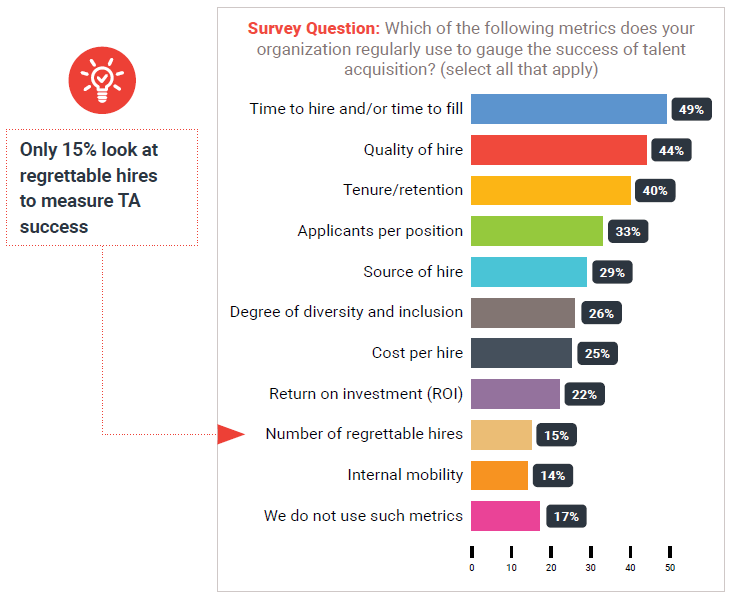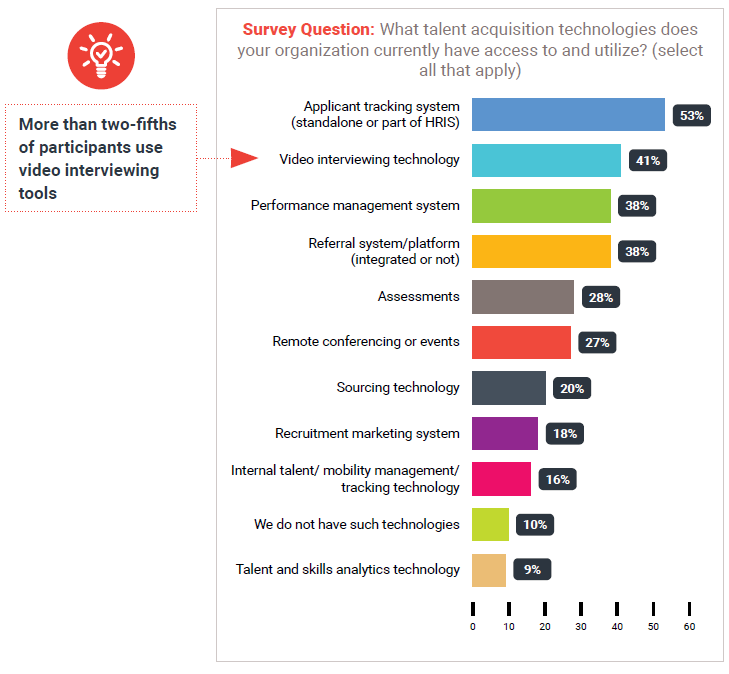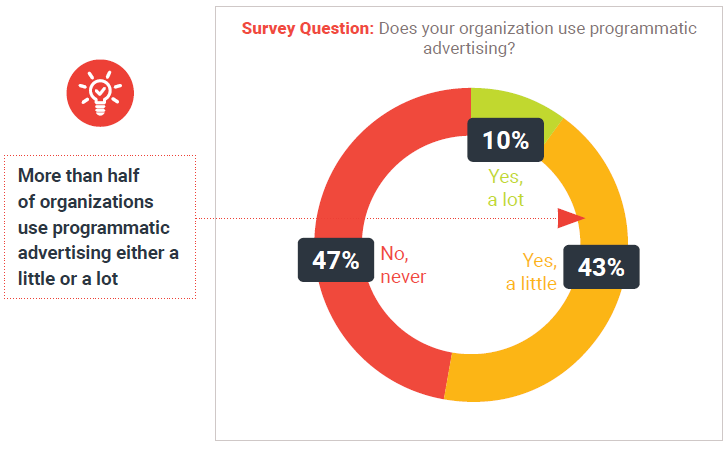Respondents are most likely to say that their organizations use time to hire and/or time to fill, with 49% citing this metric. This makes sense given today’s organizations need to find good hires quickly in a competitive marketplace.

Time to hire is the most used metric
The large majority (83%) of respondents say their organizations use some type of TA metrics. However, the metrics used vary. In fact, there is no single metric that is used by over half of organizations.
Respondents are most likely to say that their organizations use time to hire and/or time to fill, with 49% citing this metric. This makes sense given today’s organizations need to find good hires quickly in a competitive marketplace.
Quality of hire (45%) is the second most commonly cited metric. Whereas time to hire is relatively easy to calculate, quality of hire is more difficult because there are subjective elements. It is important to determine what quality means. Quality will tend to depend on feedback from hiring managers, direct managers, performance appraisals, exit interviews and more. Small (51%) organizations are more likely than large (42%) and mid-size organizations (41%) to indicate they use quality of hire as a TA metric.
It is encouraging to see that 26% are paying attention to diversity and inclusion. With the rise of social movements such as #MeToo and Black Lives Matter, more organizations are prioritizing diversity, equity and inclusion initiatives, and this includes paying greater attention to the diversity of hires.
Applicant tracking systems (ATS) are still the most widely used recruiting technology
There are many recruiting technology applications available, most promising to increase the quality and quantity of candidates as well as recruiting efficiency. Categories include applicant tracking systems, candidate marketing systems, screening/assessment tools, video interviewing platforms and onboarding tools, to name a few. Many of these applications have a long history and are updated regularly. Some, like an employee referral systems, are newer on the scene.
Fifty-three percent of responding organizations report using an applicant tracking system, the most used technology and one most classically associated with TA. Other frequently used technology applications include video interviewing (41%), performance management (41%) and referral systems (39%). Given the increase in the need for remote-based hiring, it is not surprising to see a greater of use of video interviewing technology than in the past. We do not know, however, to what extent these include the use of widely utilized virtual meeting technologies, such as Zoom, rather than video technologies specifically geared to recruitment.
Gaining the maximum benefits from recruiting technology tends to involve choosing a combination of technologies as well as the need to integrate applications with one another. This group of applications is often referred to as the “recruiting technology stack.”
How integrated are such stacks? Fifty-seven percent of respondents say their recruiting technologies are very or somewhat integrated, with the remainder being integrated only a little or not at all.
By size of organization
Large (74%) and mid-sized (56%) organizations are more likely than small (34%) organizations to say that the number one technology they utilize for talent acquisition is an applicant tracking system (standalone or part of HRIS). This makes sense since the more hires an organization makes in a year, the more it needs technology to manage the process.
Programmatic advertising is gaining traction
“Programmatic advertising” typically involves an automated way of displaying ads to specific types of people to whom you wish to show your advertising. Programmatic ads are placed using artificial intelligence and it often incorporates real-time bidding for online displays, social media advertising, and other types of ad campaigns. The underlying idea is to pay for the performance of ads rather than the display of ads.
Fifty-one percent say they use programmatic advertising, with 10% saying they use it a lot. This is up from 44% in the 2020 report. As recruiting teams move to explore new and more effective and efficient ways to reach potential great hires, this type of advertising is becoming increasingly popular. Paying for performance rather than paying per click should lower cost per hire as well as increase quality of hire. Organizations can potentially target those who possess a very specific skill and only pay once an action takes place (i.e., a candidate clicks on the ad).


